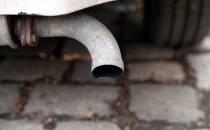Der Iran will bis Ende März ein Militärmanöver in der für den Erdölhandel wichtigen Straße von Hormus abhalten. Weitere Details zum Manöver wurden nicht genannt.
Der Iran will bis Ende März ein Militärmanöver in der für den Erdölhandel wichtigen Straße von Hormus abhalten. Durch diese Meeresenge gehen 40 Prozent der auf dem Seeweg transportierten Erdölexporte, die USA haben ihre Militärpräsenz in der Region schon vor einiger Zeit verstärkt.
Bis Ende des iranischen Jahres werde es ein Manöver in der Straße von Hormus geben, das genaue Datum werde noch bekanntgegeben, zitierte die Nachrichtenagentur Isna den Kommandeur der Revolutionsgarden, Ali Fadawi, am Montag. Das iranische Jahr endet am 20. März. Details über das Manöver nannte Fadawi nicht.
Originalmeldung der iranischen Presseagentur:
IRGC Navy Commander Rear Admiral Ali Fadavi told reporters on Monday that the drill would be held by the end of the current Iranian year (ending March 20, 2013).
Fadavi, however, did not provide details on the drill.
Over the past few years, Iran has held several military drills to enhance the defense capabilities of its armed forces and to test modern military tactics and equipment.
The Islamic Republic maintains that the drills staged by the IRGC or the Army are defensive in nature and meant to convey a message of peace and friendship to regional countries.
Elsewhere in his remarks, Fadavi said Iran seeks to establish lasting security in the Strait of Hormuz, “the world’s most vital passage for energy transit.”
The US, however, seeks to maintain its dominion over the world by taking control of the energy resources in the Middle East, he said, adding, “They are certainly incapable of establishing durable security in the region.”
The senior Iranian commander said sustainable security could be established in the Persian Gulf through the cooperation of regional countries.
The Strait of Hormuz, a narrow waterway between Iran and Oman, connects the Persian Gulf with the Sea of Oman.
It is the only sea passage from the Persian Gulf to the high seas and is one of the world's most strategically-important choke points.
Nearly 40 percent of the world's crude oil also passes through this waterway.




